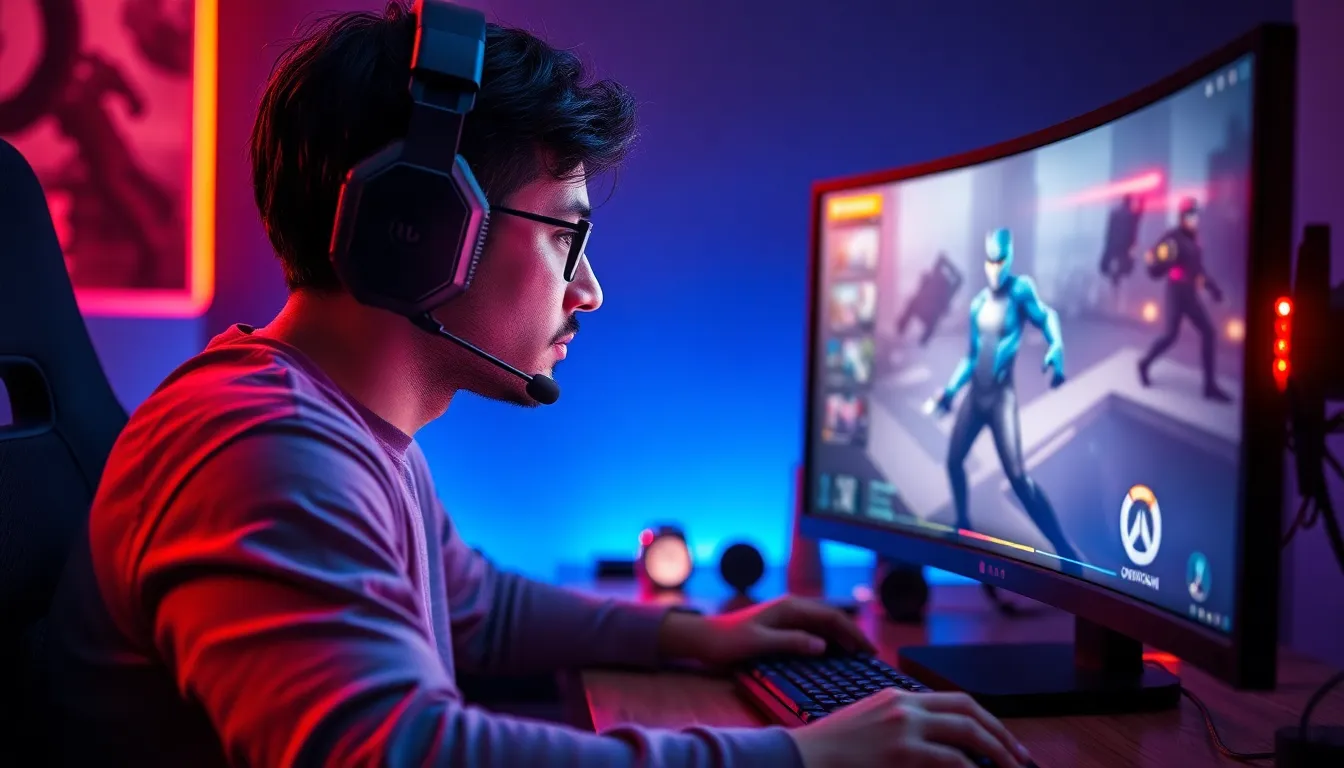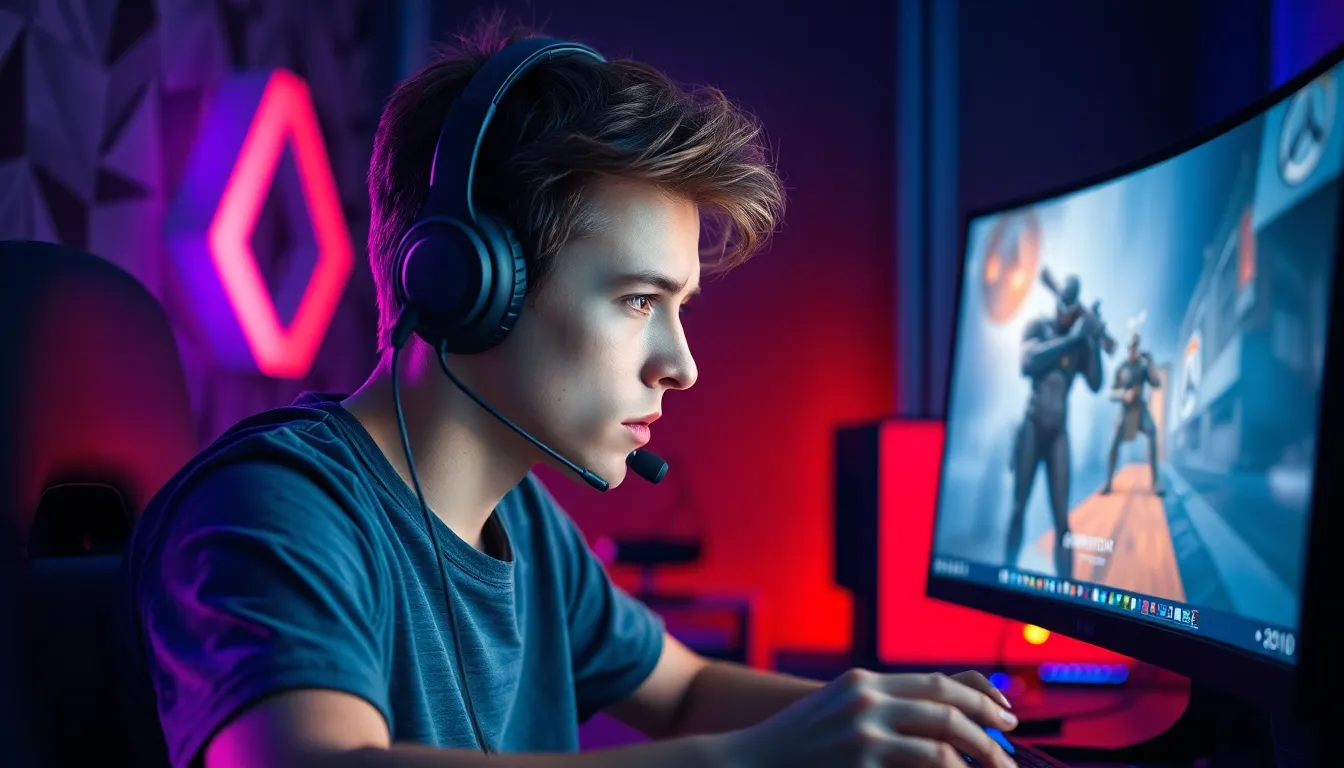Table of Contents
ToggleIn the fast-paced world of Overwatch, split-second decisions can mean the difference between victory and defeat. Imagine your team’s about to secure that crucial objective, but your reaction time is slower than a sloth on a Sunday stroll. Yikes! Mastering reaction time isn’t just a skill; it’s an art form that can elevate any player from average to legendary status.
Understanding Overwatch Reaction Time
Reaction time in Overwatch plays a pivotal role in a player’s effectiveness during matches. Quick responses to enemy movements and game dynamics often determine the outcome of critical situations.
Importance in Gameplay
Fast reaction times lead to better performance in Overwatch. Players who respond quickly can execute strategies and adapt to enemy actions. Securing objectives hinges on a player’s ability to act without hesitation. Successful teams often rely on members who can process information rapidly and respond appropriately. Strong reaction times also boost individual skills, contributing to overall team achievement.
Factors Influencing Reaction Time
Several factors influence a player’s reaction time. Mental focus impacts how quickly a player responds to stimuli. A clear mind enhances cognitive processing speed. Physical condition also plays a significant role, including factors like fatigue and eye-hand coordination. Game settings, such as graphics and latency, may affect visual clarity and response speed. Experience and practiced skills improve reaction times, allowing players to anticipate opponents’ actions effectively.
Measuring Overwatch Reaction Time

Measuring reaction time in Overwatch involves various tools and methodologies that assess a player’s response speed. Utilizing reaction time tests, players can refine their skills and improve their gameplay.
Tools and Methodologies
Popular tools such as Aim Lab and Kovaak’s provide players with dedicated environments to practice and measure their reaction times. These platforms simulate different scenarios where users engage with targets, testing both speed and accuracy. Software solutions offer customizable scenarios that can mimic specific aspects of Overwatch gameplay. Players can track their progress over time, pinpointing areas for further improvement. Additionally, video recordings enable analysis of gameplay, allowing for evaluation of decisions and reaction timings during real matches.
Benchmarking Player Performance
Benchmarking provides essential metrics for measuring player performance against others. Matchmaking ratings assign players to skill tiers based on various factors, including reaction time. Joining community-driven leaderboards allows players to compare their times against peers. Using this information, individuals identify their strengths and weaknesses relative to others. By monitoring improvements over time, players can understand the impact of their training and adapt accordingly. Regular comparisons enhance motivation, encouraging players to continuously refine their reaction skills.
Improving Overwatch Reaction Time
Improving reaction time in Overwatch enhances gameplay performance. Several strategies can help players become more responsive during matches.
Training Techniques
Practicing consistently in controlled environments boosts reaction times. Using tools like Aim Lab or Kovaak’s allows players to focus on specific skills. Engaging in drills that emphasize tracking and flick shots cultivates muscle memory. Incorporating reflex tests into training sessions identifies strengths and weaknesses. Regularly assessing improvements guides players in refining their techniques. Adjusting sensitivity settings on mice can contribute to quicker responses. Ultimately, dedication to training fosters noticeable advancements in reaction speed.
Role-Specific Strategies
Tailoring strategies to specific roles enhances effectiveness. For DPS players, maintaining crosshair placement at head level prepares them for quick eliminations. Tanks benefit from anticipating enemy movements to shield allies effectively. Support players should focus on positioning for swift assistance during critical moments. Familiarizing oneself with hero abilities accelerates decision-making processes. Communicating with teammates to relay enemy positions increases reaction accuracy. Adapting strategies based on character roles directly impacts overall team synergy. Understanding moves and counterplays elevates individual contributions to victory.
Analyzing Overwatch Reaction Time
Reaction time significantly varies between professional and casual players. Professionals demonstrate faster response times because of extensive practice and deep game understanding. They refine their skills through rigorous training regimens, focusing on reflex tests and specialized drills. Casual players often lack this dedicated training, resulting in slower reactions during gameplay. Differences in commitment and experience create distinct playing styles, impacting performance levels in competitive matches.
Game outcomes hinge largely on reaction time. In critical moments, swift responses can turn the tide of battle, affecting team dynamics and objectives. Quick decision-making enables players to execute strategies effectively, whether initiating attacks or defending positions. Players who enhance their reaction time often contribute more to team success. Analyzing overall performance shows that teams with players who react swiftly consistently outperform those lacking in this area. In Overwatch, split-second decisions directly correlate with victory or defeat.
Mastering reaction time in Overwatch isn’t just a skill; it’s a game-changer. Players who invest time in improving their response speed often see a direct correlation with their overall performance. The ability to react swiftly to in-game dynamics can elevate individual gameplay and enhance team success.
With the right training tools and strategies, players can track their progress and make necessary adjustments. Whether through dedicated practice environments or role-specific techniques, every effort contributes to greater effectiveness in matches. As players refine their reaction time, they position themselves not just as participants but as key contributors to their team’s victories.




